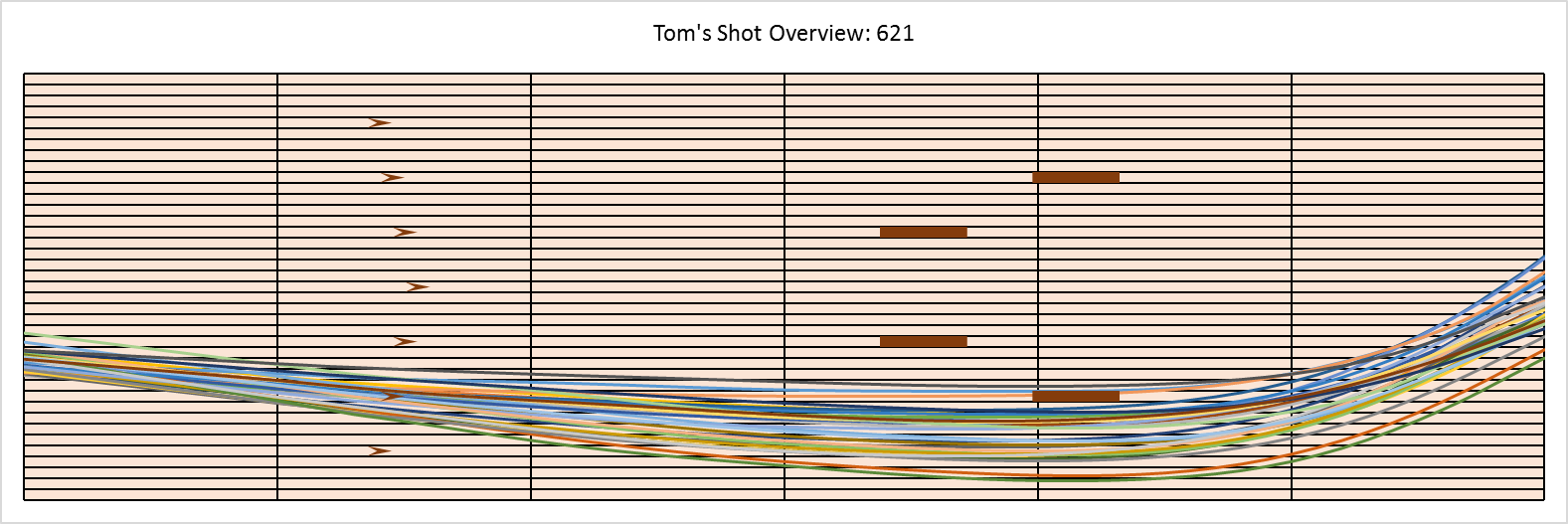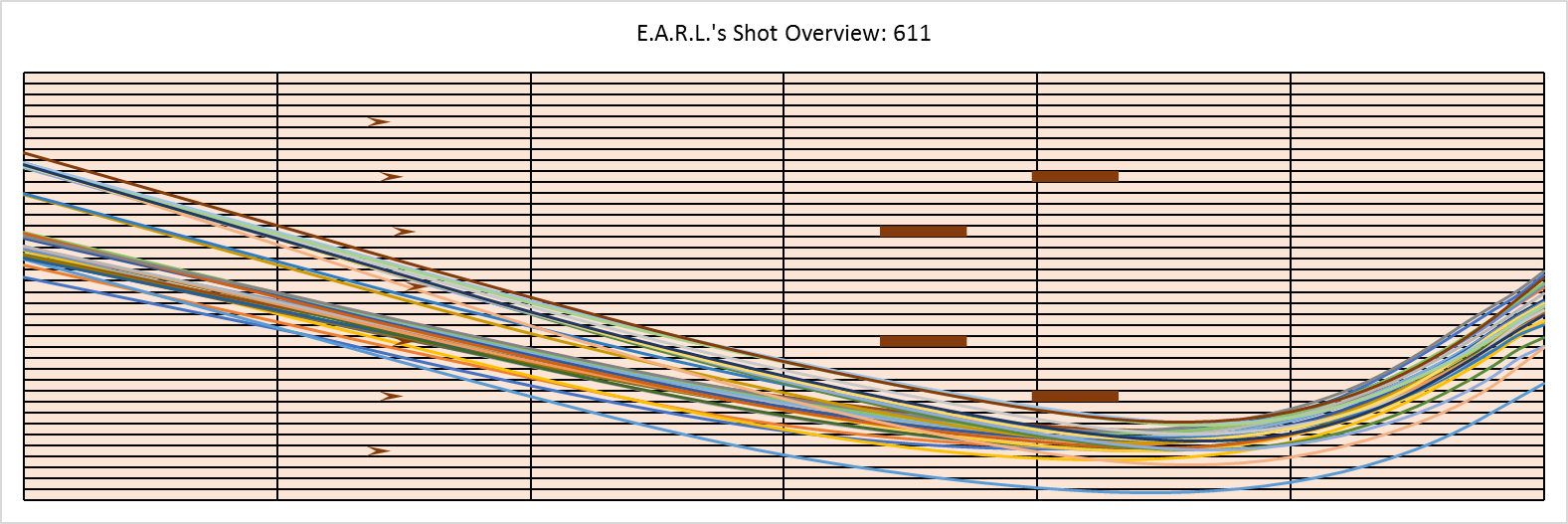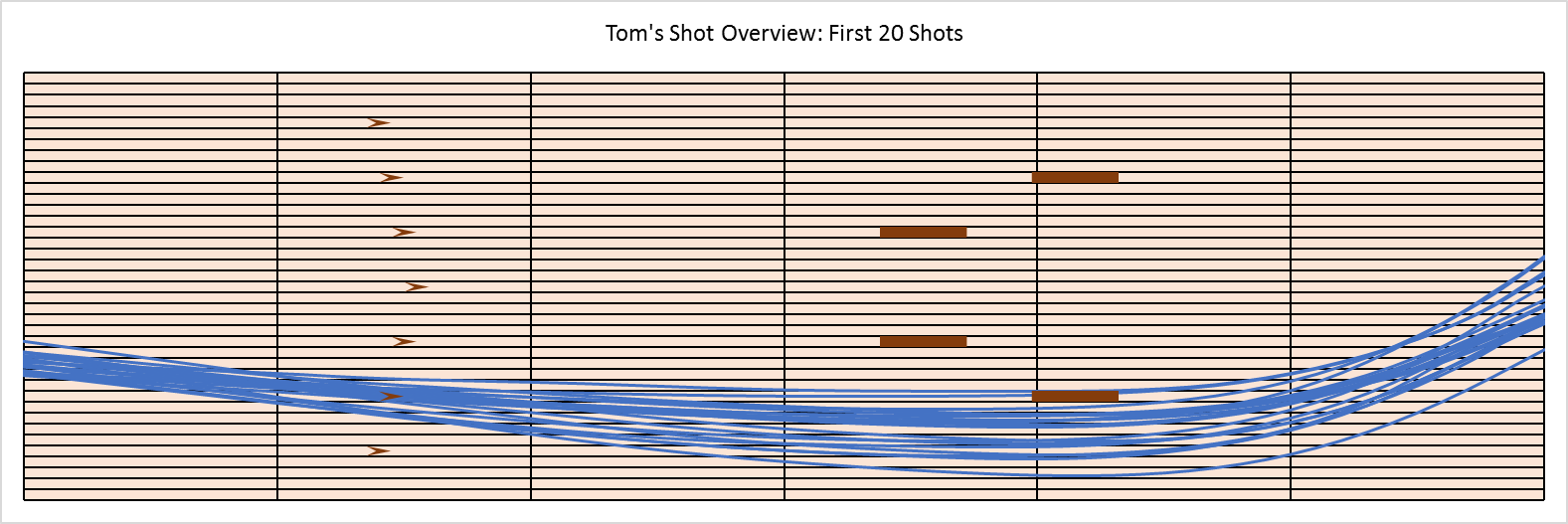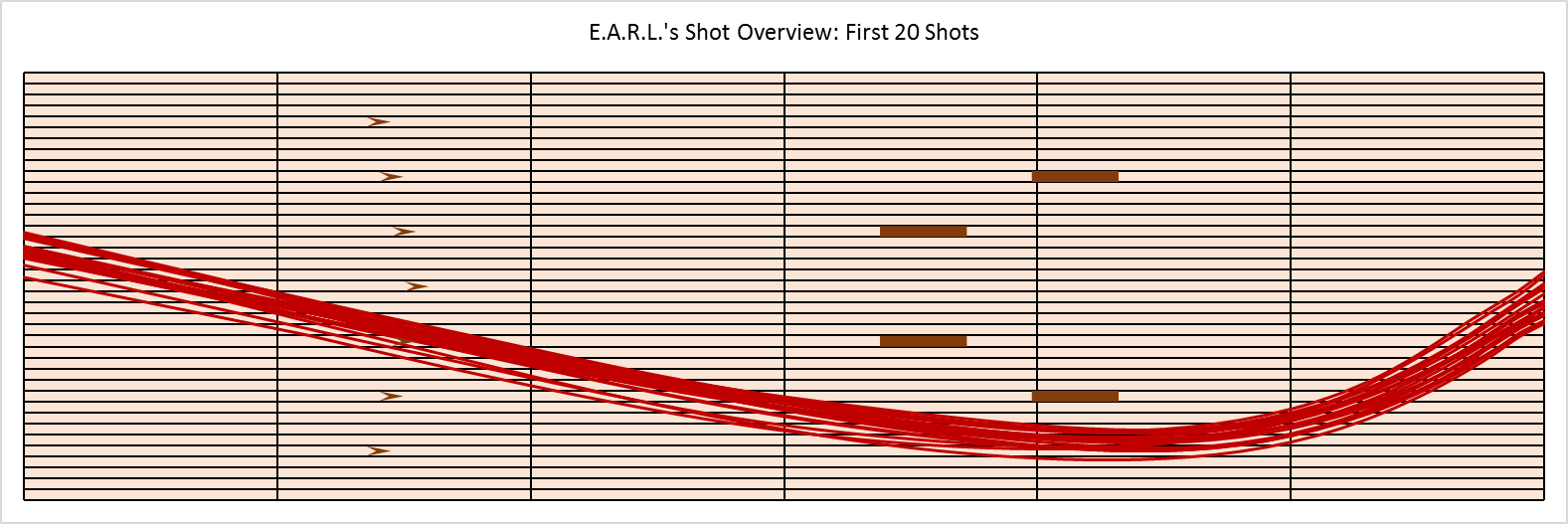By Tom Frenzel on Aug 9, 2019 8:12:00 AM
For those of you following E.A.R.L.’s Journey to 900, I think you will agree we are off to quite a disappointing start. Three episodes in the books and not even a 700 yet. The road ahead is long, but we are not done yet.
 When a robot shoots a 611 series, that’s a very sad day on the lanes – even more so if you are the one giving the robot its inputs.
When a robot shoots a 611 series, that’s a very sad day on the lanes – even more so if you are the one giving the robot its inputs.
However, on the silver lining side of things, it is an excellent time to shoe up and show the robot who’s boss. And that’s exactly what I did.
I applied our Journey to 900 lane condition to lane 16 of the ITRC, fired up SPECTO, laced ‘em up and bowled my set at the Journey to 900. I followed our “spares for groups / count for splits” scoring system (much more generous for me than for E.A.R.L.) and managed to snap off a 621 (take that!).
While it did feel good to beat the bot, it also provided an opportunity to get a different look at our pattern and compare some human data on SPECTO to how E.A.R.L.’s been performing.
Let’s see what happened out on the lanes. First up:
SCORES
TOM
|
Frame: |
1 |
2 |
3 |
4 |
5 |
6 |
7 |
8 |
9 |
10 |
11 |
12 |
SCORE |
|
|
GAME 1 |
X |
9/ |
X |
X |
7/ |
X |
62 |
X |
X |
X |
9/ |
|
212 |
|
|
|
20 |
40 |
67 |
87 |
107 |
125 |
133 |
163 |
192 |
212 |
|
|||
|
GAME 2 |
X |
9/ |
8/ |
X |
X |
X |
X |
X |
81 |
X |
9/ |
|
224 |
|
|
|
20 |
38 |
58 |
88 |
118 |
148 |
176 |
195 |
204 |
224 |
|
|||
|
GAME 3 |
7/ |
72 |
8/ |
X |
9/ |
X |
9/ |
X |
9/ |
9/ |
X |
|
185 |
|
|
|
17 |
26 |
46 |
66 |
86 |
106 |
126 |
146 |
165 |
185 |
|
|||
|
|
|
|
|
|
|
|
|
|
|
Series: |
621 |
|||
E.A.R.L.
|
Frame: |
1 |
2 |
3 |
4 |
5 |
6 |
7 |
8 |
9 |
10 |
11 |
12 |
SCORE |
|
|
GAME 1 |
7/ |
X |
X |
9/ |
6/ |
X |
X |
X |
X |
X |
81 |
242 |
||
|
|
20 |
49 |
69 |
85 |
105 |
135 |
165 |
195 |
223 |
242 |
|
|||
|
GAME 2 |
X |
9/ |
X |
X |
81 |
X |
9/ |
X |
9/ |
6/ |
X |
192 |
||
|
|
20 |
40 |
68 |
87 |
96 |
116 |
136 |
156 |
172 |
192 |
|
|||
|
GAME 3 |
81 |
7/ |
72 |
53 |
X |
X |
X |
X |
9/ |
71 |
177 |
|||
|
|
9 |
26 |
35 |
43 |
73 |
103 |
132 |
152 |
169 |
177 |
|
|||
|
|
|
|
|
|
|
|
|
|
|
Series: |
611 |
|||
E.A.R.L. takes high game, I take series and 2 out of 3 match points. Key takeaways:
- I’d be a way better bowler if I made all my makeable spares
- The pattern isn’t “too hard” if I can throw a five-bagger.
- For some reason, I am able to strike on this pattern just as much as a robot.
Let’s break down some stats:
|
Stat |
Tom |
E.A.R.L. |
|
Total shots |
33 |
32 |
|
Strikes (X%) |
18 (54.5%) |
17 (53.1%) |
|
Spares (/%) |
12 (36.4%) |
9 (28.1%) |
|
Open (-%) |
3 (9.1%) |
6 (18.8%) |
The amount of strikes E.A.R.L. and I threw were very similar. Both of us averaged just over 50-percent on strikes, and we both had a longest streak of a five-bagger. However, with me staying in my comfort zone, my misses produced three fewer splits than our approach with E.A.R.L., which ultimately kept me in the lead by a slight margin. The question becomes, how can we enhance E.A.R.L.’s strike percentage to a point much higher than 53 percent? In order to shoot 900, we need a stretch of 100-percent strikes for 36 shots. To actually accomplish this, we need to get our strike percentage north of 85%, but how? Let’s look at the ball paths and see what we can learn there.
Ball Paths

Reviewing these ball paths, the differences between E.A.R.L. and I become even more obvious. For this set, I was attempting to play the 11 board at the arrows to the eight board at the second downlane marker. We can look at the graph and notice my launch angles have much higher variation than E.A.R.L.’s because my ball paths fan out from a single point. E.A.R.L.’s ball paths are much more parallel, but his laydown spots cover much more area as we move him often, and by the end of the set, we had completely adjusted his launch parameters. But rather than just referencing subjective observations, let’s analyze some data from SPECTO and try to quantify just how much better E.A.R.L. bowled compared to me.
Let’s focus on four metrics:
- Launch-angle consistency
- Ball-speed consistency
- Ball position at the arrows (approximately 50 feet)
- Ball position at the second downlane markers (40 feet)
For those who haven’t watched Episode 2 yet, note that we made a large adjustment to E.A.R.L.’s throwing style toward the end of the set, as well as one viewer-supplied move near the beginning that was significantly off the line we were playing. For this comparison, we are going to stick to E.A.R.L.’s first 20 shots, not including the fifth shot, and to make it apples to apples we will compare my first 20 shots. (Ball paths to follow.)
To quantify who wins each category, we will be looking at the ratio of the variance by taking the larger value and dividing by the smaller value and claiming the bowler with the smaller value is that many times better than the other. For example, if your speed variance was 1 MPH and mine was 5 MPH, we could take the larger value 5, divide by the smaller value 1, and claim your control is five times greater than mine. Here are the results:
Statistics Summary Table
|
Stat |
Tom’s Average |
Tom’s Variance |
E.A.R.L.’s Average |
E.A.R.L.’s Variance |
Winner |
|
Launch Angle |
-1.1141 |
0.103 |
-2.624 |
0.034 |
E.A.R.L. (3x better) |
|
Ball speed |
17.903 |
0.130 |
18.516 |
0.142 |
Tom(?!) (1.1x Better) |
|
Position at Arrows |
9.889 |
1.167 |
15.678 |
0.717 |
E.A.R.L. (1.6x Better) |
|
Position Down-Lane |
7.064 |
2.747 |
6.187 |
0.606 |
E.A.R.L. (4.5x better) |
Looks like I should have been smoked by E.A.R.L., who was three times better than me at launch-angle control and 4.5 times better than me at hitting his downlane target. Strangely enough, SPECTO has me with slightly higher speed control than E.A.R.L., but since we are both essentially equal in this area, I need to do additional research to determine how precisely SPECTO is measuring the ball speeds. For now, I’ll take it!

Based on our findings in this comparison it looks like the area for most improvement would be to increase E.A.R.L.’s ability to repeat ball speed. Next up in the E.A.R.L. research will be to do a speed-repeatability study to find at which ball speeds can E.A.R.L. best repeat. By minimizing E.A.R.L.’s variance in these four key launch areas, we should be able to put up our best set yet next time on the Journey to 900. Stay tuned here to catch the data recap on Episode 3. And don’t forgot to check out our fourth episode on Monday, Aug. 12!
Tom



comments